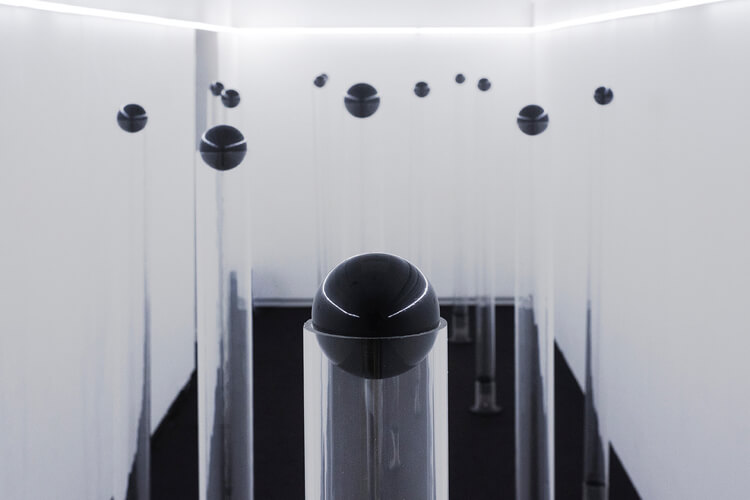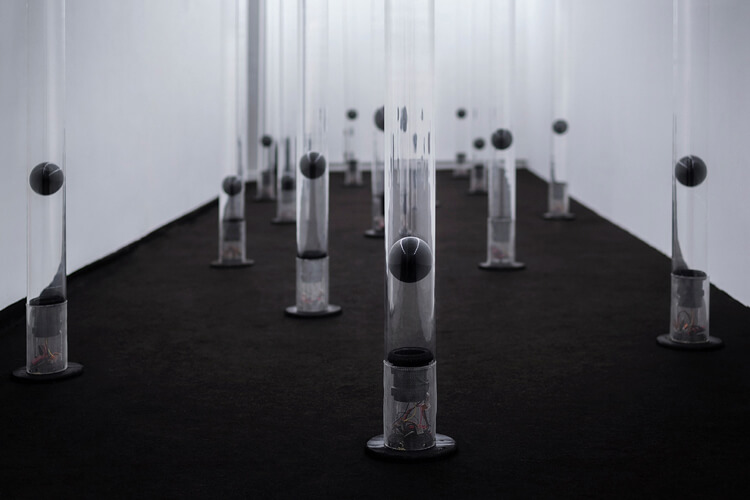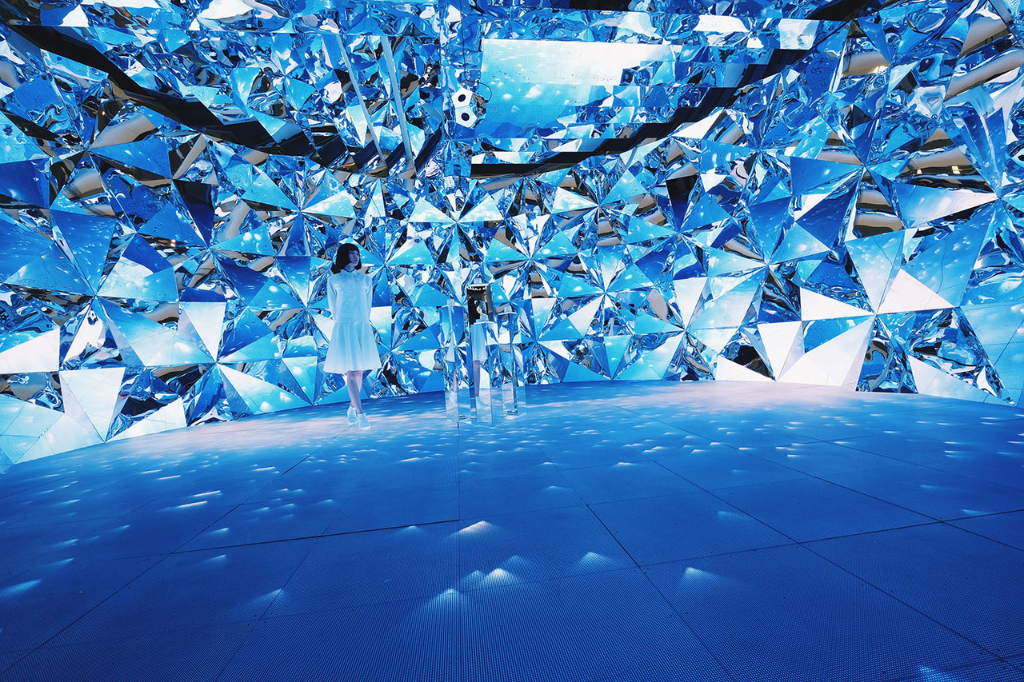Interview by Marielle Saums

Chris Cheung (h0nh1m) harnesses chaotic matter within the architectural constraints of his installations and audiovisual performances. The Hong Kong-based artist and designer is influenced by the teachings of Zhuang Zhou, the co-founder of Daoism. This Chinese philosophical tradition with spiritual roots seeks to build harmony between opposing forces through connection to the natural world. In Zhuangzi, a foundational text of Daoism, Zhuang Zhou builds a fantastical world that blurs the lines between truth and fiction, good and evil, and absence and presence. It is a story without a beginning or end that prompts followers to release themselves from the constraints of dogmatic thinking in order to follow the Dao or Way.
Words demand a specificity and succinctness that elude Daoism’s nebulous nature, but its elements are evident throughout h0nh1m’s work in the hums of dark atoms, liquid luminescence, and the crackle of Geiger counters. He illuminates the effects of imperceptible forces on contemporary landscapes using sound, light and data while drawing upon Daoist concepts of energy paths, the power of transformation and immortality.
As a designer and founder of the firm XEX, h0nh1m creates immersive experiences that elicit a sense of wonder. In Prismverse, a shimmering geodesic dome insulates viewers from the bustling outside world, simultaneously mirroring the refraction of cut diamonds and the brilliance of the cosmos. Accompanied by an ambient soundtrack, the iridescent environment encourages viewers to lose their sense of scale in order to experience the world from dramatically different perspectives. h0nh1m uses data collected by bureaucratic institutions and citizen science groups to transform immaterial measurements into surreal urban environments.
RadianceScape is a travelling audiovisual piece that uses depth-map data from Google Streetview’s API to render fluctuating landscapes of live radiation emissions secreted by major cities and nuclear disaster sites. The viewer floats through empty streets past the skeletal structures of buildings while static sounds pulse in relation to changing radiation levels, stirring anxiety as the noise reaches a cacophonic peak in Fukushima and Chornobyl.
In Carbonscape, h0nh1m visualises atmospheric carbon dioxide levels monitored by NOAA (National Oceanic and Atmospheric Administration) as black spheres cascading within transparent columns that are carefully planted throughout a stark white room. The recorded sounds of emissions-emitting sources, such as factories and airplanes, fill the empty space between the columns, enveloping the viewer in discord that spreads like smog. In both Radiancescape and Carbonscape, the presence of sound warns the viewer of unnatural levels of elements disrupting the environment.
An important tenet of Daoist art found in traditional Chinese landscape painting is to show paths to immortality through depictions of paradise, but there are no allusions to human longevity in h0nh1m’s sterile urban spaces that meditate on fatal exposures to pollution and contamination. The fluidity of h0nh1m’s art gives us space to contemplate how rapid technological development disturbs human and environmental health without prescribing a specific approach towards regaining balance with the natural world.


Your work finds inspiration in nature, from diamonds and radiation to fishes, combining traditional and futuristic ideas. How and when these interests came about?
My interest and artistic practice fall into traditional Chinese philosophy. Some of the inspiration comes from the ancient texts of the Buddhist and philosopher masters, where I found the wisdom amazing. And I believed that’s the root of aesthetics how I derived from.
Prismverse, the most recent project by your creative studio XEX, is an immersive audiovisual installation created to define a new dimension of light. The piece is a collection of splendours in our mother nature, including the galaxy and distant stars, rare gemstones, glistens of flowing water, and refracted light beams. The title consists of 2 core ideas; Prism is the medium that translates light, and Verse is the time-space dimension. Could you tell us a bit more about the intellectual process behind its design?
Thanks for the commissioning from Dr Jart+, as their product V7 Toning Light emphasises the brighten-up effect for skin care, so we presented 4 sceneries and led the journey of lights travelling. Starting from the light-year hyperspace interstellar to an abstract spatial fill with fluid and geometric crystalline.
In the installation, we want to present the truthiness of light, and we want the visitor to experience it through the extra dimension we created. As light is an invisible medium that we actually can’t realise, we are only aware when it fills the dark. The wavelength of light is not perceivable; we can only see it as white. That’s why we treasure the rainbow so much when it is refracted. The pavilion is designed with tessellated geometrical mirror walls, which we made use of the diamond cutting technique “brilliant cut” that maximized the reflecting angle of lights.
One of your latest projects, RadianceScape Live!, is an audiovisual performance that visualises live radiation data of different major cities in comparison to Chornobyl and Fukushima. What were the biggest challenges you faced in its development?
I initiated the RadianceScape project with my art group XCEED back in 2014 when I returned from a half-year art exchange in Japan. The project was first presented in a screen-based medium, visualising the radiation level in Fukushima and Hong Kong. Then last year, the RadianceScape 2016 was presented in an installation setup to compare the radiation data in Chornobyl and Fukushima.
RadianceScape Live! is my solo performance that started touring around festivals this year. It visualises the live radiation data of different cities in comparing two disaster nuclear plants. The idea is to bring the observatory to the audience and let them realize the radiation leaking problem around the world. The biggest challenge to me is to collect the data before the performance as some of the locations don’t have live data available yet, so I have to round the city and record the radioactivity by using the Safecast bGeigie nano device.
Where would you like to be taking your work into?
I wish I could present this work in US and London next year.
What’s your favourite time of the day?
Maybe midnight is the best time for inspiration.
You couldn’t live without…
Maybe keep on travelling. That’s another source of inspiration.






